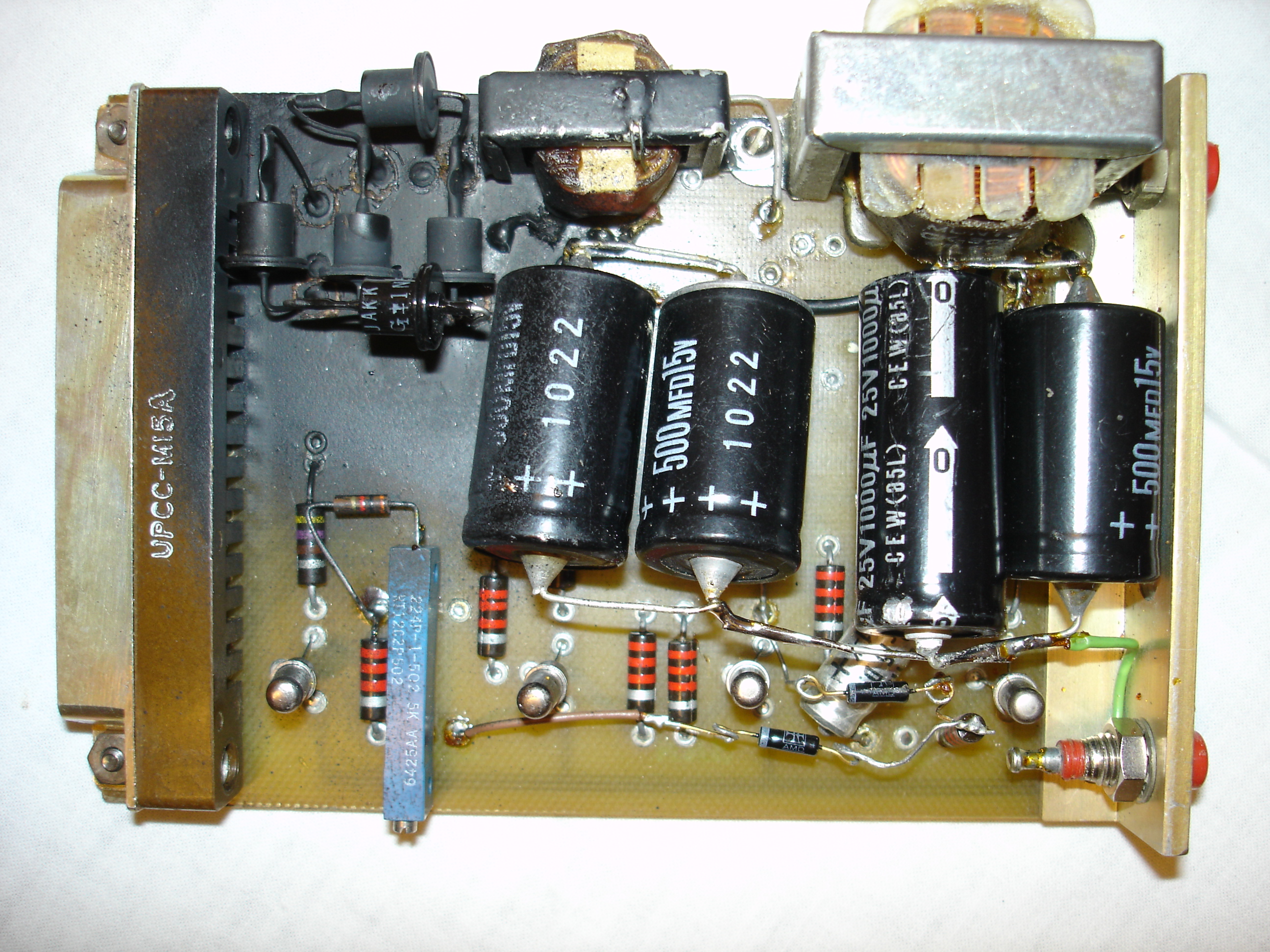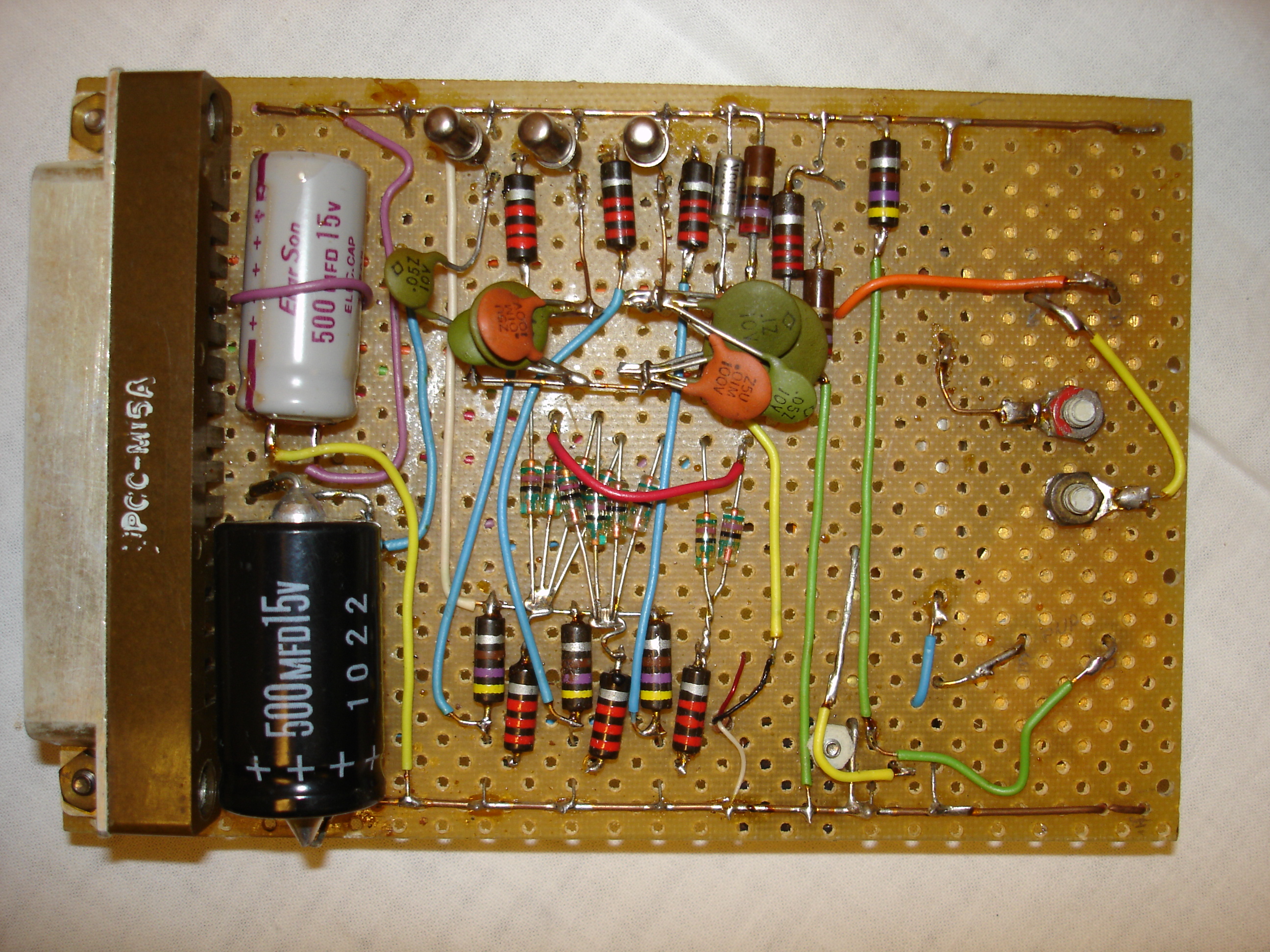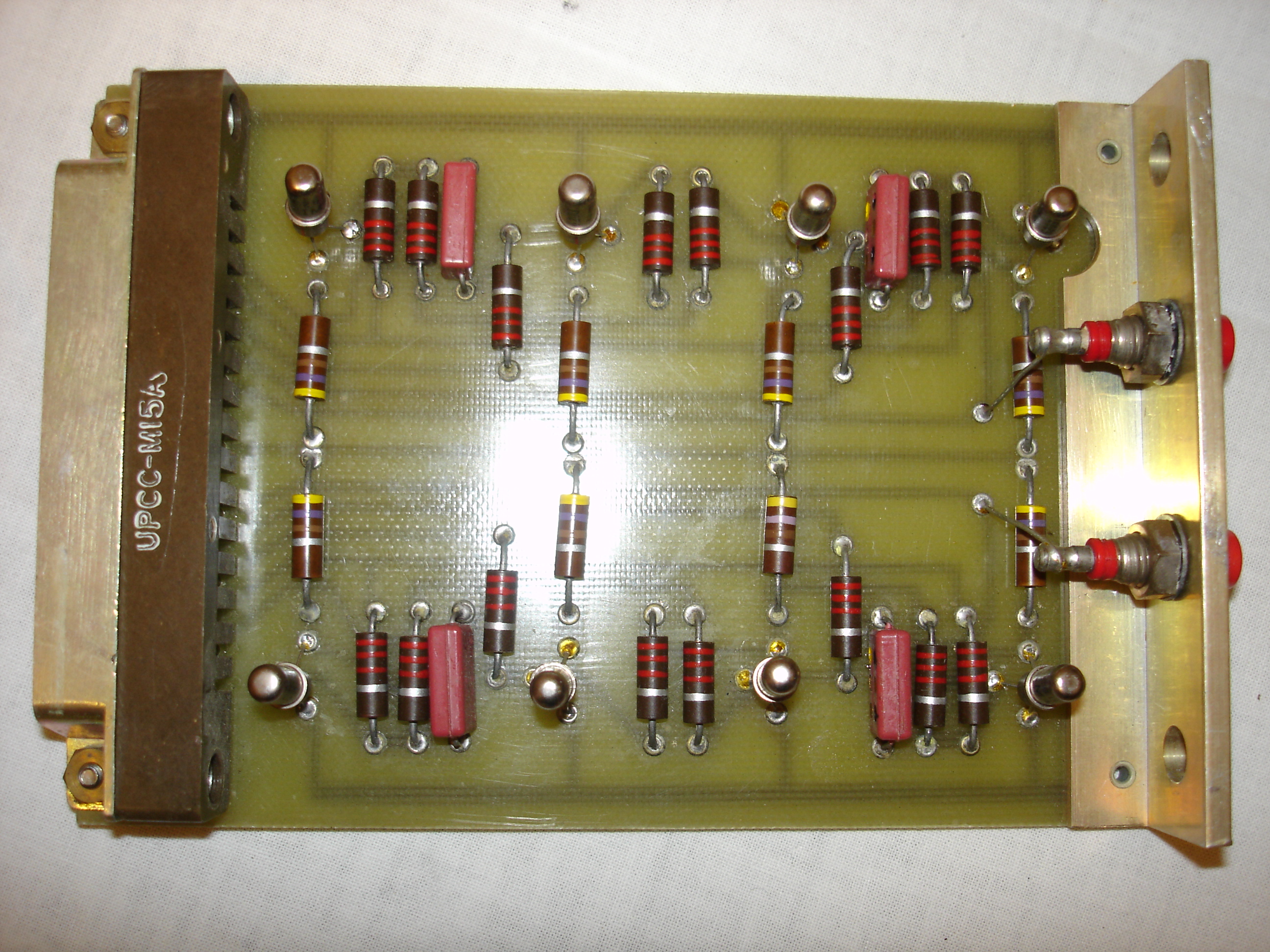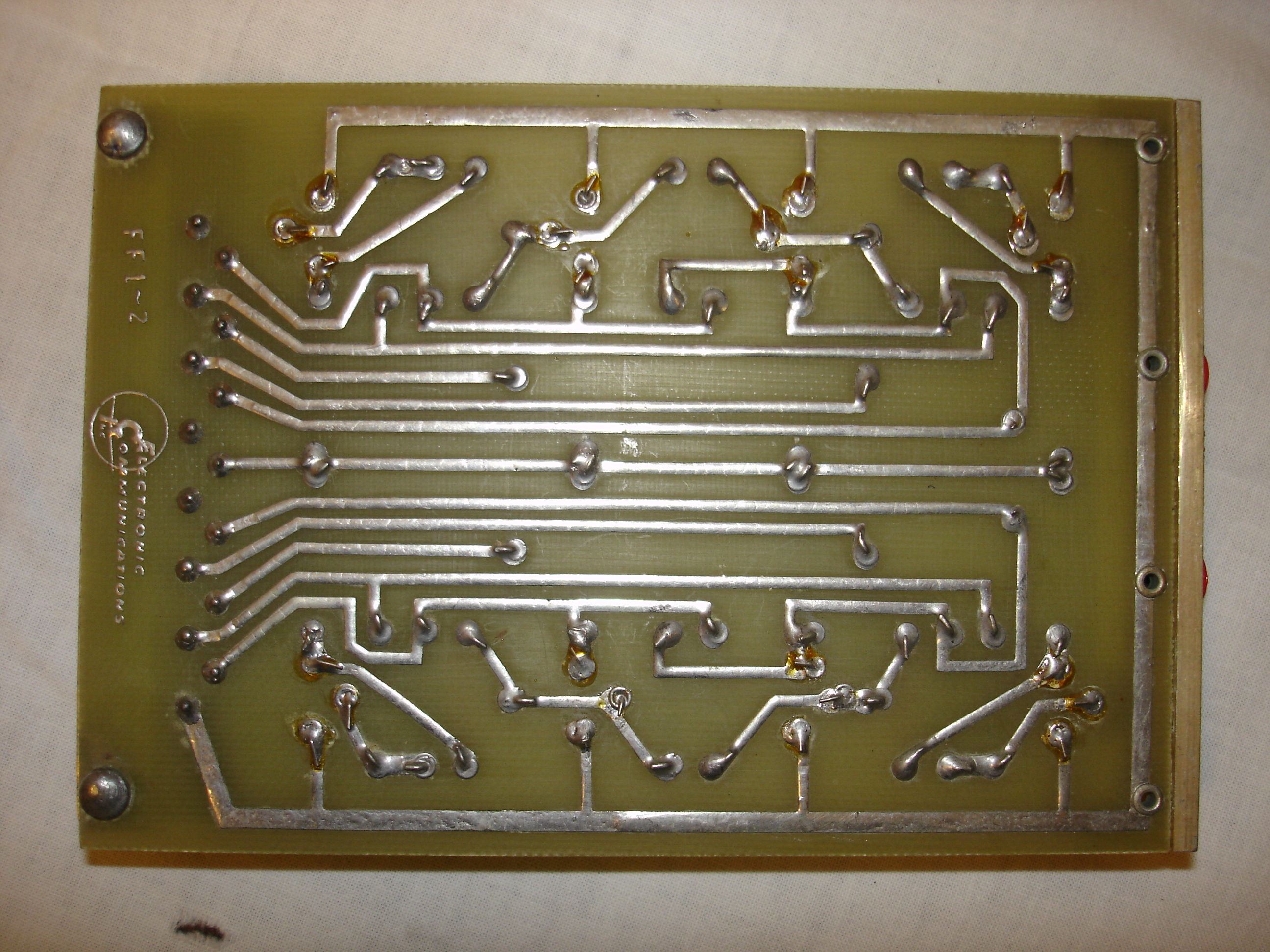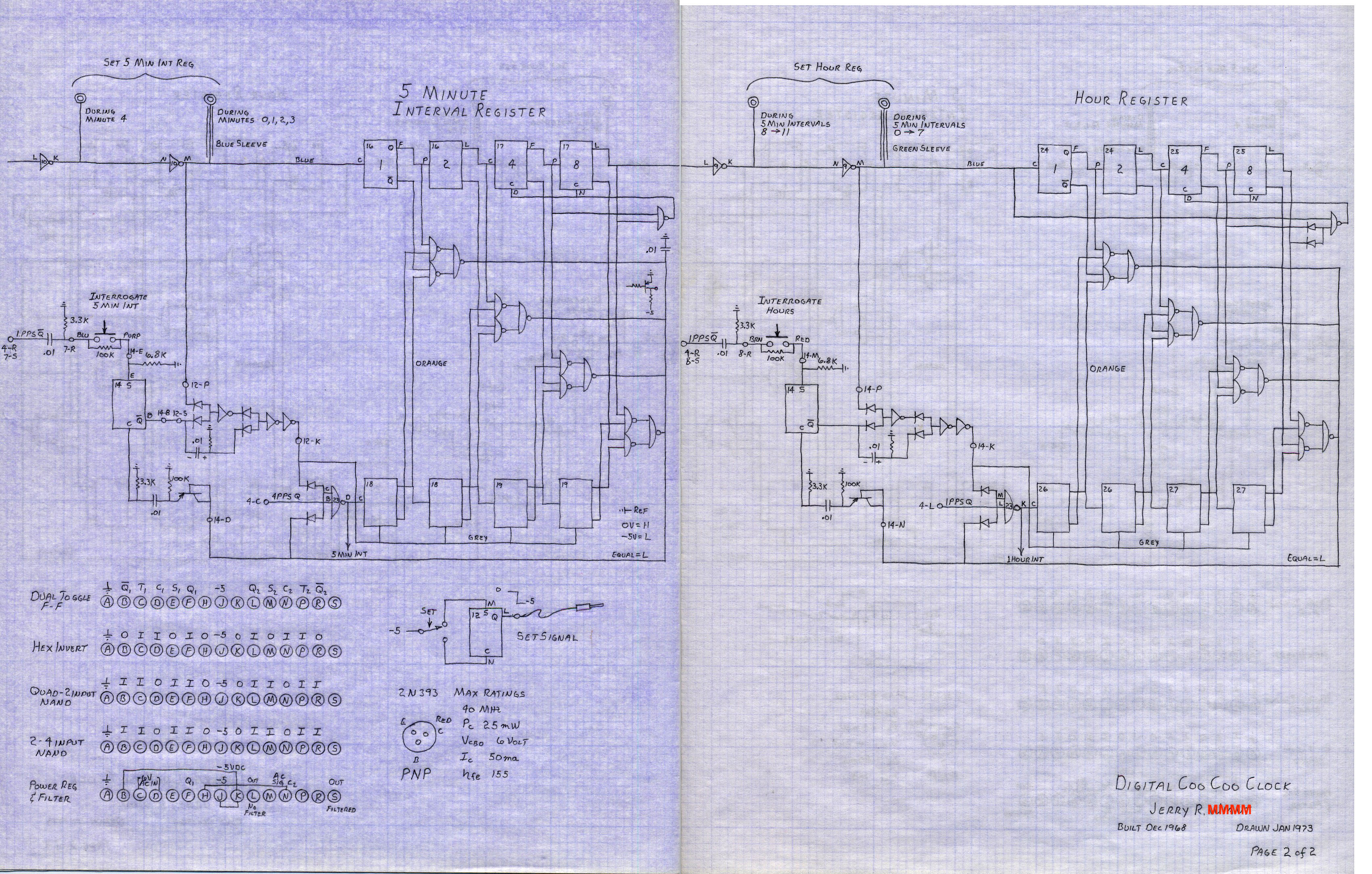Dual
toggle flip-flop board. Each flip-flop is capable of dividing a
frequency by 2. The toggle inputs are falling-level-triggered. Each
flip-flop has its own set and reset input.
The logic cards for this Coo
Coo clock were originally part of an Air Force flight simulator
computer at Wright-Patterson AFB. When the Air force updated to a
better computer these cards were discarded. Each card is 3.5 inches by
5 inches and contains the same amount of logic units (i.e., two
flip-flops, four 2-input gates, two four-input gates, 6 inverters)
found on later integrated circuit families such as RTL, DTL, TTL, CMOS,
and etc. What is surprising is that though it appears that these cards
copied the population concepts of the RTL, DTL, TTL, and CMOS families,
the truth is that these cards were built over a decade prior to when
the later families came into existence. It appears that these cards set
the example for all future logic unit concepts. Each logic unit on
these cards is composed of discrete resistors, capacitors, and
transistors. Oddly enough, the transistors are very crude germanium,
PNP, high speed switching, point junction transistors type 2N393 in a
T0-24 package. (6 volt, 50 mA) The power supply is minus 5 volts where
a "high" is zero volts and a “low” is minus 5 volts. (minus logic)
|



